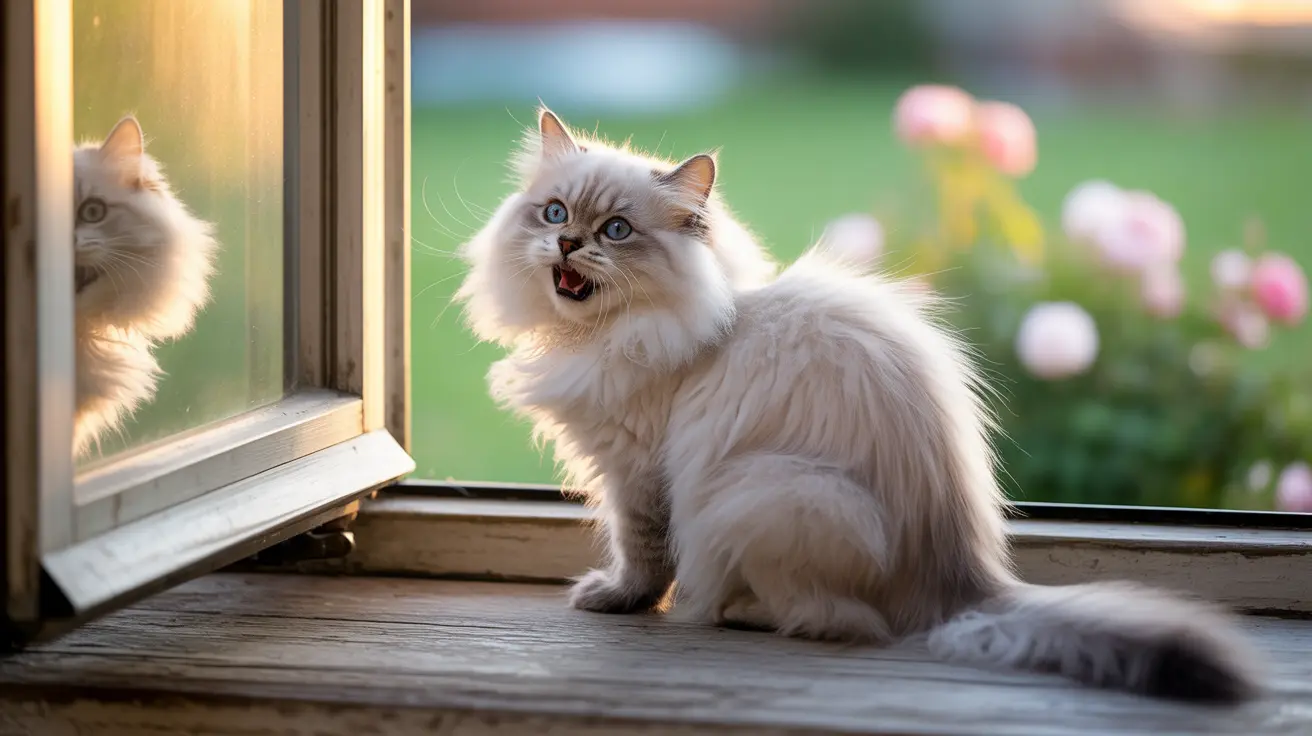If you've ever been startled by your cat's loud, drawn-out howling in the middle of the night, you've experienced caterwauling. This distinct vocalization is more than just a typical meow – it's a purposeful communication that demands attention and often signals something important in your cat's world.
Understanding why cats caterwaul and how to address it effectively can help maintain both your cat's wellbeing and your household peace. Let's explore the various causes of caterwauling and learn how to respond appropriately to this common feline behavior.
What Is Caterwauling and Why Do Cats Do It?
Caterwauling is characterized by a distinctive, high-pitched howl or yowl that's typically much louder and more prolonged than regular meowing. This vocalization serves multiple purposes in feline communication, from expressing urgent needs to marking territory.
Cats may caterwaul for various reasons, including:
- Mating behavior and reproductive status
- Physical pain or discomfort
- Territorial disputes
- Attention-seeking behavior
- Cognitive changes in senior cats
- Stress or anxiety
Medical Causes of Caterwauling
When cats suddenly begin caterwauling without obvious environmental triggers, it's essential to consider medical causes. Common health issues that may lead to excessive vocalization include:
- Hyperthyroidism
- Kidney disease
- Urinary tract infections
- Arthritis
- Dental pain
- High blood pressure
Behavioral and Environmental Triggers
Many cases of caterwauling stem from behavioral or environmental factors. Understanding these triggers is crucial for developing effective solutions:
Territorial Response
Cats may caterwaul when they spot other animals through windows or detect unfamiliar scents near their territory. This defensive vocalization serves as a warning to potential intruders.
Mating Behavior
Unspayed females in heat commonly caterwaul to attract mates, while intact males may respond with their own vocalizations. This behavior can be particularly disruptive during breeding seasons.
Managing and Preventing Caterwauling
Addressing caterwauling requires a multi-faceted approach based on the underlying cause:
Medical Management
- Schedule regular veterinary check-ups
- Address any identified health issues promptly
- Consider spaying or neutering
- Monitor senior cats for cognitive changes
Environmental Modifications
- Block views of outdoor cats
- Provide enrichment activities
- Maintain consistent daily routines
- Use pheromone diffusers to reduce stress
Frequently Asked Questions
Why is my cat caterwauling loudly at night and how can I stop it?
Nighttime caterwauling often occurs due to increased activity of outdoor cats, cognitive dysfunction in senior cats, or attention-seeking behavior. To address it, ensure your cat gets plenty of daytime activity, block window views at night, and maintain a consistent bedtime routine. For senior cats, consider night lights and consult your veterinarian about possible cognitive dysfunction.
Could my cat's caterwauling be a sign of pain or illness?
Yes, sudden or unexplained caterwauling can indicate pain or illness, including hyperthyroidism, kidney disease, urinary tract infections, or arthritis. If your cat starts caterwauling unusually, schedule a veterinary examination to rule out medical causes.
How does mating behavior cause caterwauling in unspayed female cats?
Unspayed females caterwaul during heat cycles to advertise their reproductive status to potential mates. These cycles can last up to three weeks and recur until the cat becomes pregnant or is spayed. The behavior is a natural part of feline reproduction but can be prevented through spaying.
What environmental factors trigger territorial caterwauling and how can I reduce it?
Territorial caterwauling is often triggered by seeing or smelling other cats near your home. Reduce these triggers by closing blinds, using deterrents to keep other cats away from your property, and providing environmental enrichment inside your home.
How can I tell if my senior cat's caterwauling is due to cognitive dysfunction?
Senior cats with cognitive dysfunction typically show other signs alongside caterwauling, such as disorientation, altered sleep patterns, and confusion at night. If your cat is over 11 years old and shows these symptoms, especially at night, consult your veterinarian for an evaluation.
Remember, while caterwauling can be concerning or frustrating, it's your cat's way of communicating something important. By identifying and addressing the underlying cause, you can help ensure your cat's wellbeing while maintaining household harmony.






